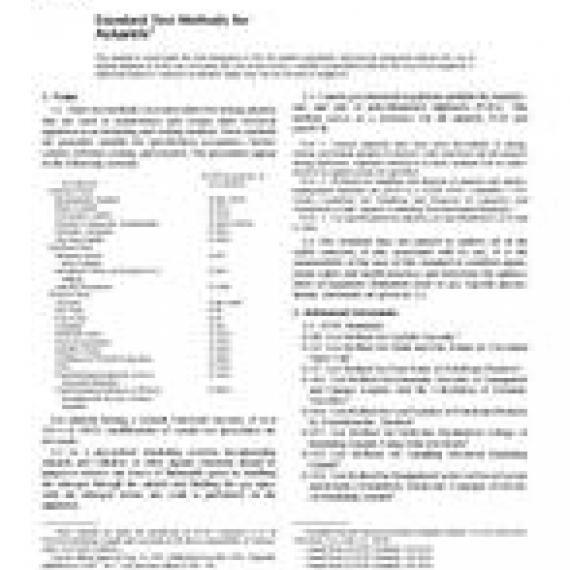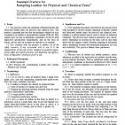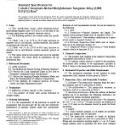No products
ASTM D901-91(1997)
ASTM D901-91(1997) Standard Test Methods for Askarels (Withdrawn 2004)
standard by ASTM International, 04/10/1997
Full Description
1.1 These methods cover procedures for testing askarels that are used in transformers and certain other electrical apparatus as an insulating and cooling medium. These methods are generally suitable for specification acceptance, factory control, reference testing, and research. The procedures appear in the following sections:
| Test Method | ASTM Designation of Test Method |
| Chemical Tests: | |
| Neutralization Number | D664, D974 |
| Water Content | D1533 |
| Scavenger Content | D1701 |
| Chrlorine Compounds, Hydrolyzable | D1820, D2441 |
| Chlorides, Inorganic | D1821 |
| Thermal Stability | D1936 |
| Electrical Tests: | |
| Dielectric Breakdown Voltage | D877 |
| Dissipation Factor and Relative Permittivity | D924 |
| Specific Resistance | D1169 |
| Physical Tests: | |
| Viscosity | D88, D455 |
| Fire Point | D92 |
| Pour Point | D97 |
| Sampling | D923 |
| Refractive Index | D1218 |
| Visual Examination | D1702 |
| Specific Gravity | D1810 |
| Coefficient of Thermal Expansion | D1903 |
| Color | D2129 |
| Polychlorinated Biphenyls in Environmental Materials | D3304 |
| Polychlorinated Biphenyls in Mineral | |
| Insulating Oils by Gas Chromatography | D4059 |
For askarels having a Saybolt Universal viscosity of over 110 s at 100oF, modifications of certain test procedures are necessary.
1.2 As a precaution, insulating systems incorporating askarels and cellulose or other organic materials should be purged to remove any traces of flammable gases by bubbling dry nitrogen through the askarel and flushing the gas space with dry nitrogen before any work is performed on the apparatus.
1.3 Current governmental regulations prohibit the manufacture and sale of polychlorinated biphenyls (PCBs). This method serves as a reference for all askarels, PCB and non-PCB.
Note 1--Various materials have been used successfully in taking, storing, and testing samples of askarels. Until experience has developed a strong preference, materials referred to in these methods will be understood to be approved but not specified.
Note 2--Methods for handling and disposal of askarels and askarel-impregnated materials are given in a recent ANSI Committee C-107 Guide, Guidelines for Handling and Disposal of Capacitor and Transformer-Grade Askarels Containing Polychlorinated Biphenyls.
Note 3--For specifications for askarels, see Specifications D2233 and D2283.
1.4 This standard does not purport to address all of the safety problems, if any, associated with its use. It is the responsibility of the user of this standard to establish appropriate safety and health practices and determine the applicability of regulatory limitations prior to use. Specific precautionary statements are given in 1.2.


































